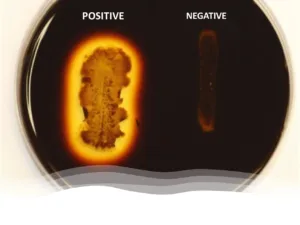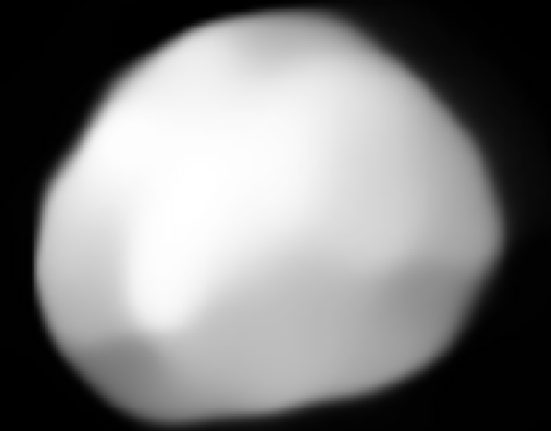The starch hydrolysis test serves as a crucial method to identify bacteria with the ability to hydrolyze starch, using enzymes such as α-amylase and oligo-1,6-glucosidase. Starch hydrolysis agar serves as a medium in microbiological laboratories to evaluate the enzymatic activity of microorganisms.
Principle of starch hydrolysis test
The principle of the starch hydrolysis test lies in detecting an organism's ability to produce the enzyme amylase, which hydrolyzes starch into smaller subunits, such as maltose and glucose. This test helps differentiate bacteria based on their ability to break down starch.

Purpose of starch agar
Starch agar functions as a differential medium intended to test the enzymatic activity of microorganisms, particularly their ability to produce α-amylase and oligo-1,6-glucosidase. This medium evaluates the ability of organisms to produce exoenzymes, facilitating the breakdown of starch into smaller, absorbable molecules.
Composition and preparation of starch agar.
Starch agar comprises meat extract, soluble starch and agar suspended in distilled water. The medium is sterilized by autoclave and poured into sterilized Petri dishes for solidification. Additionally, commercially available premixed dehydrated powder or premade agar plates can be used, following the manufacturer's instructions.
Starch Agar Recipe and Storage Guidelines
Composition (per liter):
- Beef extract: 3 g
- Soluble starch: 10 g
- Agar: 12g
- Distilled water: 1 liter
Preparation:
- Suspend the meat extract, soluble starch and agar in 1 liter of distilled water.
- Mix well and heat with frequent stirring until boiling.
- Avoid excessive boiling to prevent starch hydrolysis.
- Autoclave at 121°C for 15 minutes at 15 psi.
- Ensure that the final pH of the medium is 7.5 ± 0.2 at 25°C.
- After sterilization, pour the melted medium into sterilized Petri dishes (20 to 30 ml per dish) and allow to solidify before use.
- The prepared medium has a light amber to slightly opalescent appearance.
Storage:
- Prepared starch agar plates become opaque if refrigerated.
- The prepared medium can be dispensed into screw-cap tubes and stored for up to 2 weeks.
- After 2 weeks, changes in starch may occur and reddish-purple spots may appear when iodine is added.
- To use medium stored in tubes, melt it in a boiling water bath, pour it into individual dishes, and let it come to room temperature before using.
- Starch agar medium is commercially available as premixed dehydrated powder or premade agar plates from biological supply companies. Follow the manufacturer's instructions for preparation.
Procedure for starch hydrolysis test
1. Inoculation:
- Use sterile technique to inoculate test bacteria onto starch agar plates.
- Use a fresh culture of the test organism, preferably a 16 to 18 hour pure culture.
- Choose a single isolated colony and spread it on the agar surface in a zigzag pattern or inoculate it as appropriate.
2. Incubation:
Incubate the inoculated plates at 35 ± 2°C for 24 to 48 hours, or longer if necessary (up to 3 to 5 days), allowing bacterial growth and enzymatic activity.
3. Addition of iodine solution:
- After the appropriate incubation period, flood the agar surface with Gram's iodine solution using a dropper.
- Be sure to completely cover the surface of the agar with the iodine solution, but avoid excess buildup.
- Let the iodine solution react with the starch present in the agar.
4. Visualization and Interpretation:
Observe the plates for characteristic color changes.
- Positive result: Clear areas around bacterial growth, indicating starch hydrolysis.
- Negative result: Dark blue or black discoloration of the middle, indicating intact starch.
Record results immediately to avoid inaccurate interpretations.
Documentation:
- Document the results by taking photographs of the plates before and after the addition of the iodine solution.
- Clearly label plates with relevant information, including bacterial species, date, and any other pertinent details.
QA:
- Perform quality checks on each new batch of starch agar before use.
- Be sure to properly inspect the agar plates for freezing, contamination, cracking, and dehydration before storage and use.
Storage and handling:
- Store prepared starch agar plates properly, avoiding excessive exposure to light and maintaining adequate temperature conditions.
- Discard any dishes that show signs of deterioration, contamination, or expired shelf life.
- Follow recommended guidelines for microbiological waste disposal and decontamination procedures.
Repeat test (if necessary):
- If inconclusive results are obtained or further confirmation is required, plates can be reincubated and retested as necessary.
- Ensure proper documentation and traceability of repeated testing procedures for accurate record keeping.
Reports:
- Record and report results accurately, including any additional observations or notes relevant to the interpretation of the starch hydrolysis test.
- Communicate findings quickly and effectively to relevant stakeholders or colleagues for further analysis or decision making.
Expected Starch Hydrolysis Test Results
- Positive test:
- Appearance of light areas: A clear area surrounding bacterial growth indicates starch hydrolysis.
- Characteristics: The area may initially appear yellow due to the iodine present in the medium and progressively become lighter or more transparent.
- Interpretation: The presence of clear areas indicates that the test organism has the enzymatic capacity to hydrolyze starch.
- Negative test:
- Dark blue or black coloration: The medium remains dark blue or black, indicating intact starch.
- Characteristics: No clear areas are observed surrounding the bacterial growth.
- Interpretation: The lack of clear areas means that the test organism does not produce the extracellular enzymes necessary to hydrolyze starch.
Uses and limitations
Starch hydrolysis tests have several purposes, including differentiating species within bacterial genera and assisting in the identification of specific microbial characteristics. However, it is important to recognize its limitations, such as the inability to subculture from plates after the addition of iodine due to cell death caused by the oxidative nature of the reagent.
Conclusion:
Starch hydrolysis agar represents a Fundamental tool in microbiology laboratories to evaluate bacterial enzymatic activity and differentiate microbial species. depending on their ability to degrade starch. Understanding the principles, procedure and applications of this test improves its usefulness in microbial identification and characterization, contributing to broader scientific research and clinical diagnosis.
Learn more:













Leave feedback about this